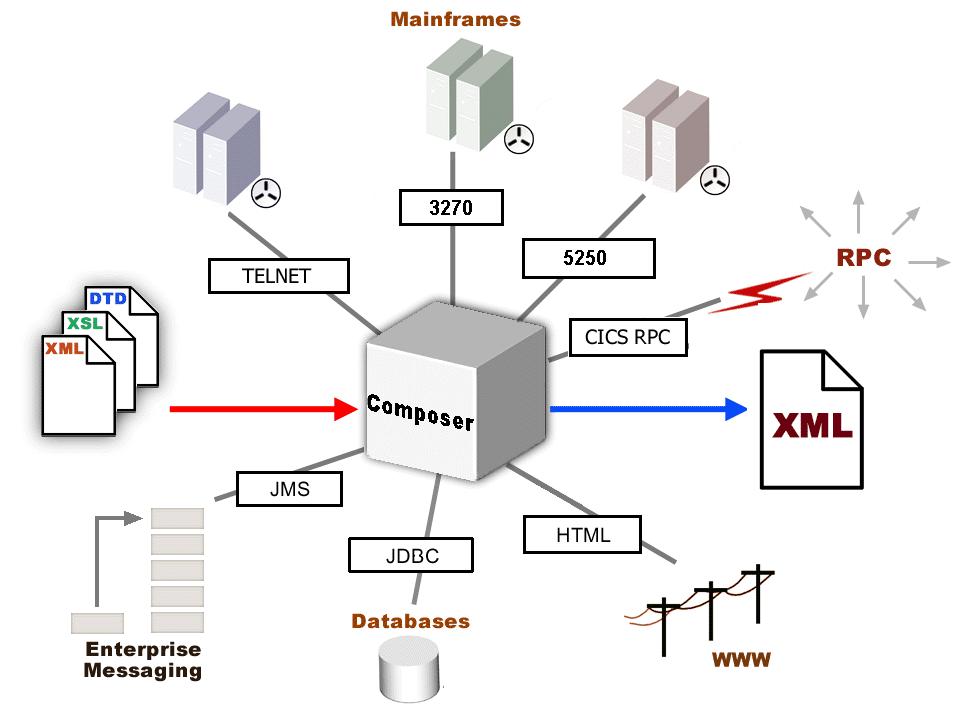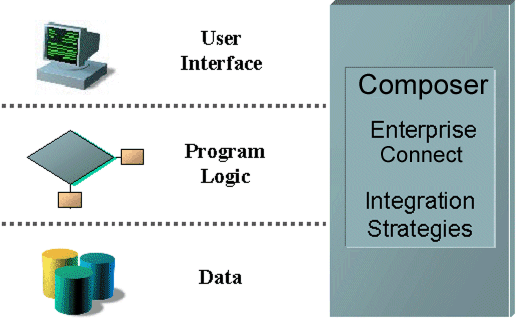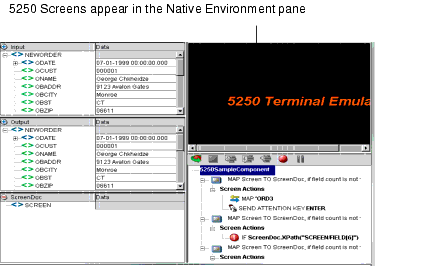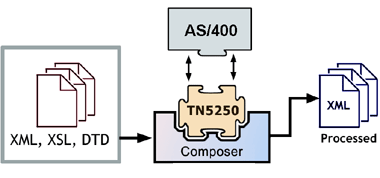
5250 Connect User's Guide
CHAPTER 1
Welcome to the 5250 Connect Guide. This Guide is a companion to the Integration Manager User's Guide, which details how to use all the features of Integration Manager, except the Connect Component Editors. If you haven't looked at the Integration Manager User's Guide yet, please familiarize yourself with it before using this Guide.
Integration Manager provides separate Component Editors for each Connect, like 5250. The special features of each component editor are described in separate Guides like this one.
If you have been using Integration Manager, and are familiar with the core component editor, the XML Map Component Editor, then this Guide should get you started with the 5250 Component Editor.
Before you can begin working with the 5250 Connect you must have installed it into your existing Integration Manager. Likewise, before you can run any Services built with this Connect in the Integration Manager Enterprise Server environment, you must have already installed the server-side software for this Connect into Integration Manager Enterprise Server.
NOTE: To be successful with this Component Editor, you must be familiar with the IBM 5250 environment and the applications that you want to XML-enable.
Integration Manager is built upon a simple hub and spoke architecture (Fig.1-1). The hub is a robust XML transformation engine that accepts requests via XML documents, performs transformation processes on those documents and interfaces with XML-enabled applications, and returns an XML response document. The spokes, or Connects, are plug-in modules that "XML- enable" sources of data that are not XML-aware, bringing their data into the hub for processing as XML. These data sources can be anything from legacy COBOL/applications to Message Queues to HTML pages.

Integration Manager Connects can be categorized by the integration strategy each one employs to XML-enable an information source. The integration strategies are a reflection of the major divisions used in modern systems designs for Internet- based computing architectures. Depending on your B2B needs and the architecture of your legacy applications, Integration Manager can integrate your business systems at the User Interface, Program Logic, or Data levels.

The 5250 Connect XML-enables IBM AS/400-legacy system data using the User Interface integration strategy by hooking into the Terminal Data Stream (TDS).
The term 5250 is commonly used to refer to the generic "dumb terminal" types used to connect to IBM AS/400 mid-range systems. When connecting to an IBM AS/400, the 5250 TDS uses IBM's EBCDIC character-encoding scheme. The 5250 TDS, which was developed in the 1960s, emerged as that generation's standard, and persists today. The 5250 TDS allows users to interact with legacy applications through the use of attention keys (e.g., Enter and Function Keys) that are interpreted by the application running on the host to perform the appropriate actions. This interaction, through a dumb terminal, means that all the data is processed information from the AS/400 computer. The 5250 terminal emulation software can be used to make a microcomputer or PC act as if it were a 5250-type terminal while it is communicating with an AS/400.
Using the 5250 Connect, you can make legacy applications running on an IBM AS/400 and their business logic available to the internet, extranet, or intranet processes. The 5250 Connect Component Editor allows you to build Web Services by simply navigating through an application as if you were at a terminal session. You will use XML request documents to drive the inquiries and updates into the screens rather than keying, use the messages returned from applications screens to make the same decisions as if you were at a terminal, and move the data and responses into XML documents that can be returned to the requestor or continue to be processed. The 5250 screens appear in the Native Environment pane of the 5250 Component Editor.

Much like the XML Map component, the 5250 component is designed to map, transform, and transfer data between two different XML templates (i.e., request and response XML documents). However, it is specialized to make a TN5250 connection to an AS/400 application, process the data using elements from a DOM to a terminal session, and then map the results of the terminal session to an output DOM. You can then act upon the output DOM in any way that makes sense for your integration application. In essence, you're able to capture data from, or push data to, a legacy system without ever having to alter the legacy system itself.
A 5250 component can perform simple data manipulations, such as mapping and transferring data from an XML document into an AS/400 transaction, or perform "screen scraping" of a 5250 transaction, putting the harvested data into an XML document. It can also perform sophisticated operations, such as mapping and manipulating screens that contain repeating rows and screens where more than one screen of data is required to satisfy the request. These are termed multi-row and multi-screen transactions within Integration Manager. The 5250 component has all the functionality of the XML Map component and can process XSL, send mail, and post and receive XML documents using the HTTP protocol.
The following illustration shows how a 5250 component uses a TN5250 connection to interact with data on AS/400.

Integration Manager, and consequently the 5250 Connect, can be applied to the the following types of applications:
Business to Business Web Service interactions such as supply chain applications.
Consumer to Business interactions such as self-service applications from Web Browsers.
Enterprise Application Integrations where information from heterogeneous systems is combined or chained together.
Fundamentally, the 5250 Component Editor allows you to extend any XML integration you are building to include any of your business applications that support 5250-based terminal interactions (See the Integration Manager User's Guide for more information.)
For example, you may have an application that retrieves a product's description, picture, price, and inventory from regularly updated databases and displays it in a Web browser. By using the 5250 Component Editor, you can now get the current product information from the operational systems and the static information (e.g., a picture) from a database and merge the information from these separate information sources before displaying it to a user. This provides the same current information to both your internal and external users.
Copyright © 2004 Novell, Inc. All rights reserved. Copyright © 1997, 1998, 1999, 2000, 2001, 2002, 2003 SilverStream Software, LLC. All rights reserved. more ...